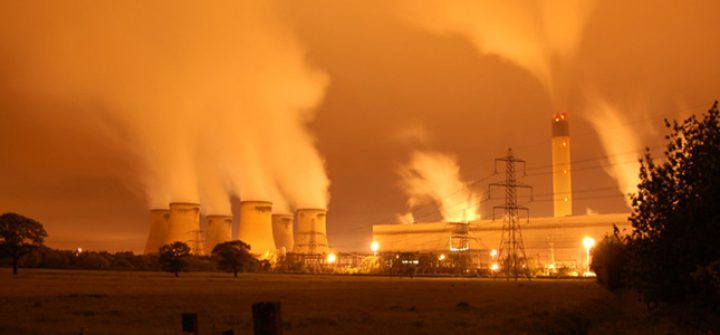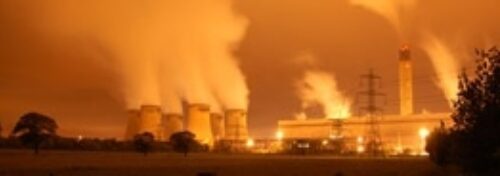What's causing climate change?
Greenhouse gases, ocean cycles, dust - why is our climate changing?

By Richard Black
@_richardblackShare
Last updated:
What do greenhouse gases do?
About 30% of the solar energy that reaches Earth is reflected back to space by clouds and ice. The other 70% is absorbed by the land, oceans and atmosphere, warming up the planet. The warm surface, in turn, gives off heat (infrared radiation). This heat travels back up into the atmosphere, where is absorbed by ‘greenhouse gases’ and redirected to Earth’s surface.
Greenhouse gases occur naturally in Earth’s atmosphere, primarily water vapour with carbon dioxide playing a secondary role. This means Earth possesses a natural ‘greenhouse effect’ which keeps it at a temperature that can sustain life. Without it, the average surface temperature would be about minus 15-18ºC.
Since the beginning of the Industrial Revolution, human activities have been increasing the concentrations of greenhouse gases in the atmosphere. Carbon dioxide (CO2) is the most important, contributing 82% of the total increase in warming. The next most important gases, in terms of the warming they cause, are methane, nitrous oxide and hydrofluorocarbons (HFCs).
Since humans started industrialising, the concentration of carbon dioxide in the atmosphere has gone up by 46%, methane by 157%, and nitrous oxide by 22%. The extra heat trapped by these gases has raised Earth’s average surface temperature by about 1ºC.
Where do greenhouse gases come from?
The main source of greenhouse gases (GHGs) is the burning of fossil fuels. Of the total annual emissions globally (45.9 Gt), 78% comes from energy production (36 Gt), 11% from agriculture (5.2 Gt), 7% from industrial processes (3.2 Gt) and 3% from waste (1.5 Gt). Apportioning energy-related emissions into the sectors where the energy is used, generating electricity and heat account for about 40% of total global carbon dioxide emissions, with transport accounting for about a quarter.

Looking at the UK, carbon dioxide accounts for about 80% of the UK’s total greenhouse gas emissions. About 23% of the UK’s greenhouse gas emissions come from transport, making it the largest-emitting sector. Industry and buildings account for a further 21% and 18%, respectively. Sustained progress to reduce emissions in the power sector mean that electricity production now accounts for 13% of the UK’s greenhouse gas emissions.
UK greenhouse gas emissions have fallen by 40% since 1990, while the economy has grown by 75%. Globally, however, greenhouse gas emissions rose by about 57% over the same period. In 2018, global greenhouse gas emissions rose by 1.8% compared to the previous year, the fastest rate since 2010.
What else is important?
Aerosols are tiny particles present in the atmosphere. They occur naturally, for example, after a volcanic eruption or when Saharan dust is whipped into the air by strong winds. But human activity has increased the amount of aerosols in the atmosphere through burning fossil fuels and biomass, vehicle exhausts and using fire to clear land.
The main source of aerosols are the rapidly industrialising countries of Asia, where aerosol ‘clouds’ have been seen from space. Clean air legislation in Western Europe and North America has reduced the amount going into the atmosphere in recent decades, lowering air pollution.
Overall, aerosols have a cooling effect on the climate by reflecting sunlight back into space. But in some cases aerosols cause warming. For example, soot or ‘black carbon’ warms the atmosphere and darkens the surface of snow and ice, making it absorb more of the Sun’s energy and speeding up melting.
In contrast to carbon dioxide, aerosols only stay in the lower atmosphere for short periods, often measured in days. They are also not evenly distributed around the world, meaning their impacts can vary from region to region.
Aerosols are also responsible for forming clouds, which have a complex effect on climate. Overall, aerosols are known to have a cooling effect but the magnitude of that effect is still one of the biggest question marks when it comes to predicting future temperature.
Amplifiers and dampeners
The impact of greenhouse gases can be amplified or dampened by a range of factors.
For example, warmer air can hold more water vapour. Since water vapour is itself a greenhouse gas, this leads to more warming and, in turn, greater evaporation in a self-perpetuating ‘feedback loop’ that raises global temperature further.
Higher temperatures mean that ice melts faster. While white snow and ice reflects solar energy back into space, the darker surface of land or ocean absorbs more solar energy, further increasing the temperature.
The formation of clouds can act either to amplify or to reduce greenhouse warming. This is because, depending on where in the atmosphere they lie, clouds can either act as an extra insulating ‘blanket’ keeping heat trapped in or as a bright reflective sheet that sends more solar energy back into space.
Natural changes
The climate has always changed naturally. For example, over at least the last 800,000 years, the Earth has repeatedly swung between Ice Ages and warmer ‘interglacial’ periods, triggered by small changes in the Earth’s orbit around the Sun.

The amount of the Sun’s energy that reaches Earth also varies considerably from year-to-year and over short periods of time (eg. the 11-year ‘sunspot’ cycle). But since 1970, satellites have measured a reduction in the amount of solar radiation reaching Earth’s surface at the same time that global temperature has risen sharply. Scientists are extremely confident that changes in solar activity have had only a minimal effect on Earth’s climate over the past century compared to greenhouse gases.
Volcanoes release dust particles (a type of aerosol) into the atmosphere and big eruptions can change the climate for several years. The eruptions of El Chichón in Mexico in 1982 and Mount Pinatubo in The Philippines in 1991 each reduced the average temperature by a few tenths of a degree Celsius for several years.
Heat is constantly being exchanged between the ocean and atmosphere. Sometimes, there is an overall transfer from ocean to atmosphere while at other times, the reverse occurs. The most familiar example of this cycling is the El Niño Southern Oscillation (ENSO), which has warm and cold phases that last several months.
In the warm phase (El Niño), warm water accumulates at the surface of the eastern Pacific Ocean and the heat transferred to the atmosphere causes higher than average global surface temperature. The strong El Niño event in 2015 contributed around 10% of the record warming that year. In the cold phase (La Niña), the overall transfer of heat from atmosphere to ocean lowers the average temperature across the Earth’s surface temporarily.
Other natural cycles involving heat transfer between ocean and atmosphere include the Atlantic Multidecadal Oscillation (AMO), the Pacific Decadal Oscillation (PDO) and the Indian Ocean Dipole (IOD). While ENSO can lead to warmer or colder years, these other cycles occur over longer time periods and can amplify or dampen human-caused warming for a decade or longer.
Share
